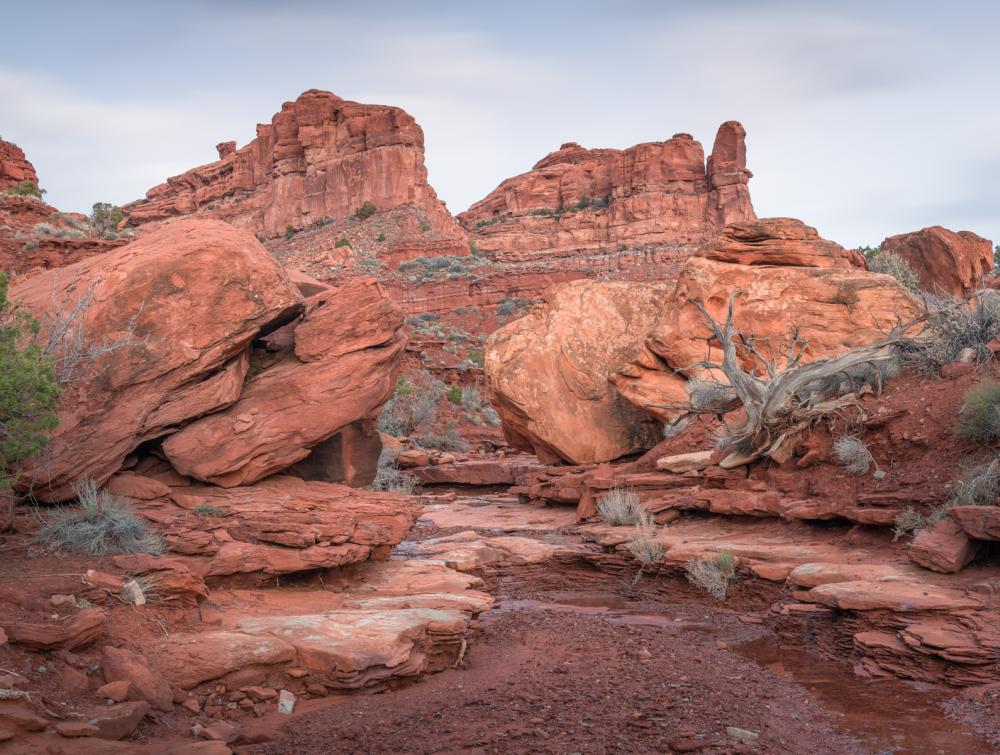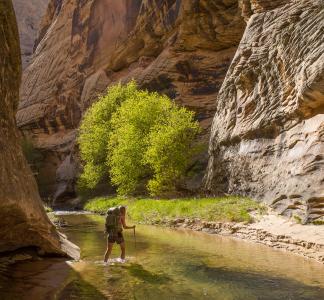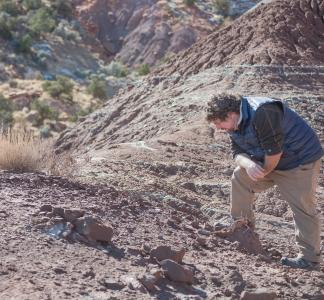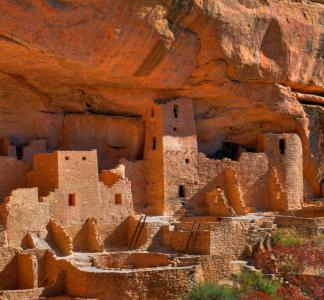Trump admin releases plan for its fraudulent, diminished version of Bears Ears

Bears Ears National Monument, Utah
Mason Cummings, TWS
BLM proposal exposes cultural sites and fossils to harm
On July 26, the Bureau of Land Management released a final proposal for what actions will be allowed on the small sliver of Bears Ears National Monument that remained after President Trump unlawfully rolled back protections for the landscape in 2017.
Just as the parts of Bears Ears Trump cut out—some 85 percent of the monument--are now exposed to development, looting and other dangers, the severely diminished version of the monument that still enjoys some level of protection is newly vulnerable.
Here are the basic facts about what this new plan means.
What’s the new “plan” for Bears Ears and why does it matter?
Let’s take it from the beginning. In 2017, acting on the recommendation of then-Interior Secretary Ryan Zinke, President Trump signed a proclamation that cut about 85 percent of Bears Ears National Monument, leaving thousands of archaeological sites out in the cold and going against the wishes of the Navajo, Hopi, Ute Mountain Ute, Zuni and Ute Indian Tribe peoples who petitioned for protection of Bears Ears in the first place. We sued the Trump administration—as did tribes and other groups--challenging violations against the Antiquities Act.
The new proposal could allow new and damaging off-road vehicle routes in areas likely to contain fossils
Even as those lawsuits moved through the court system, the Trump administration kicked off a hasty administrative planning process to decide how the tiny 15-percent remainder of Bears Ears should be managed. This is a common step for land management agencies, which need to know about a park or monument’s resources before they can make solid decisions about how to take care of it; in the case of Bears Ears, a key issue was how best to protect and preserve rock art, cliff dwellings and other culturally significant sites. But we were dismayed to see what’s supposed to be a thoughtful process turned into a reckless scramble to the finish line while the underlying presidential action was still being challenged.
The document the Bureau of Land Management released on July 26 was the Trump administration’s final proposal for managing the unlawfully shrunken version of Bears Ears. It is, in a word, bad; in addition to potentially allowing new and damaging off-road vehicle routes in areas likely to contain fossils, it lays out plans for protecting cultural sites despite the fact that most of the monument hasn’t yet been surveyed for them.
Wait a minute, didn’t all this stuff already happen?
Yes and no. If any of this sounds familiar, it might be because we raised the alarm about this plan in 2018, when the Trump administration released a draft version of it. You helped us drive thousands of comments to the Department of the Interior letting them know the plan was irresponsible and asking that agencies consult with tribes before moving forward. We also asked them to at least consider a contingency plan that would protect the entire monument, since Trump's cuts were still being challenged in court and could be overturned at any time.
Not satisfied with sharply (and unlawfully) reducing Bears Ears, they've issued a proposed final decision to reduce protections for even the severely diminished version of the monument that remains
What’s new? Well, we now know for sure the Trump administration has decided to disregard those concerns. Not satisfied with sharply (and unlawfully) reducing Bears Ears, they've issued a proposed final decision to reduce protections for even the severely diminished version of the monument that remains.
What will happen to Bears Ears next?
Our legal challenges to Trump’s attempted rollbacks to Bears Ears and Grand Staircase-Escalante will continue to advance in court. We will also work with tribes and other partners to explore our options to challenge this irresponsible plan, including through potential future litigation. Once the final plan is signed, BLM will be looking to designate additional roads and infrastructure throughout the monument that will lead to disruption of cultural and natural resources and backcountry recreation opportunities that the monument was created to protect. We'll fight against that, too.
By now we know Trump doesn’t care what we say. So what can we do?
Fortunately, new leadership in Congress brings a crucial opportunity to respond to the Bears Ears cuts (and the reductions to Grand Staircase-Escalante National Monument, too).
Conservation champs in Congress have introduced a proposal that would restore Bears Ears National Monument to what was originally envisioned by the Native American tribes, giving permanent protection to tens of thousands of important cultural and archaeological sites.
Conservation champs have introduced a proposal that would restore Bears Ears National Monument to what was originally envisioned by tribes
Not only would this action restore protections to the more than 100,000 archaeological and cultural sites protected by President Obama’s monument declaration in 2016, but an even greater share of the surrounding land that is integral to tribal culture, honoring “the Native presence that has blended into every cliff and corner,” in the words of the original proposal. It would also restore the Bears Ears Inter-Tribal Coalition tribes to their rightful management role over the landscape in collaboration with federal agencies.
Take action now: Urge Congress to restore the promise of Bears Ears National Monument
UPDATE: Mining interests stake claims in Grand Staircase-Escalante and Bears Ears national monuments
Jack Brauer
New fossil discoveries show paleontology depends on protecting places like Bears Ears
Mason Cummings
10 extraordinary Native American cultural sites protected on public lands
Steve Dunleavy, Flickr



